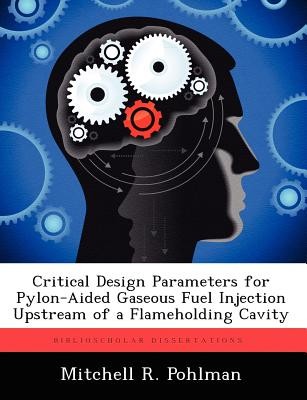
- We will send in 10–14 business days.
- Author: Mitchell R Pohlman
- Publisher: BiblioScholar
- ISBN-10: 1249594170
- ISBN-13: 9781249594178
- Format: 18.9 x 24.6 x 0.8 cm, minkšti viršeliai
- Language: English
- SAVE -10% with code: EXTRA
Critical Design Parameters for Pylon-Aided Gaseous Fuel Injection Upstream of a Flameholding Cavity (e-book) (used book) | bookbook.eu
Reviews
Description
The Air Force Institute of Technology and the AFRL are investigating means to increase the efficiency of fuel-air mixing into supersonic flow. Previous work has shown much promise in increasing the penetration and mixing of a fuel-air mixture into the freestream by injecting fuel behind small triangular pylons. Pylon-aided fuel injection has also shown to lift the fuel plume off the combustor floor; this floor-gap prevents the ignition of fuel seeded in the boundary layer. In this paper twenty-one pylons of varying widths, heights, and lengths were examined in four specific test matrices within a CFD environment. Pylons in test matrix 1 maintained a constant height and length while varying the pylon width. Test matrix 2 and 3 varied the absolute height of two different pylons from test matrix 1; scaling the pylons height and maintaining a constant leading edge wedge angle and width to height ratio. The final test matrix varied the length of pylons while keeping the height and width fixed. Pylons with a width less than 3-diameters featured a fuel plume dominated by two sets of counter-rotating vortices.
EXTRA 10 % discount with code: EXTRA
The promotion ends in 21d.21:28:23
The discount code is valid when purchasing from 10 €. Discounts do not stack.
- Author: Mitchell R Pohlman
- Publisher: BiblioScholar
- ISBN-10: 1249594170
- ISBN-13: 9781249594178
- Format: 18.9 x 24.6 x 0.8 cm, minkšti viršeliai
- Language: English English
The Air Force Institute of Technology and the AFRL are investigating means to increase the efficiency of fuel-air mixing into supersonic flow. Previous work has shown much promise in increasing the penetration and mixing of a fuel-air mixture into the freestream by injecting fuel behind small triangular pylons. Pylon-aided fuel injection has also shown to lift the fuel plume off the combustor floor; this floor-gap prevents the ignition of fuel seeded in the boundary layer. In this paper twenty-one pylons of varying widths, heights, and lengths were examined in four specific test matrices within a CFD environment. Pylons in test matrix 1 maintained a constant height and length while varying the pylon width. Test matrix 2 and 3 varied the absolute height of two different pylons from test matrix 1; scaling the pylons height and maintaining a constant leading edge wedge angle and width to height ratio. The final test matrix varied the length of pylons while keeping the height and width fixed. Pylons with a width less than 3-diameters featured a fuel plume dominated by two sets of counter-rotating vortices.


Reviews